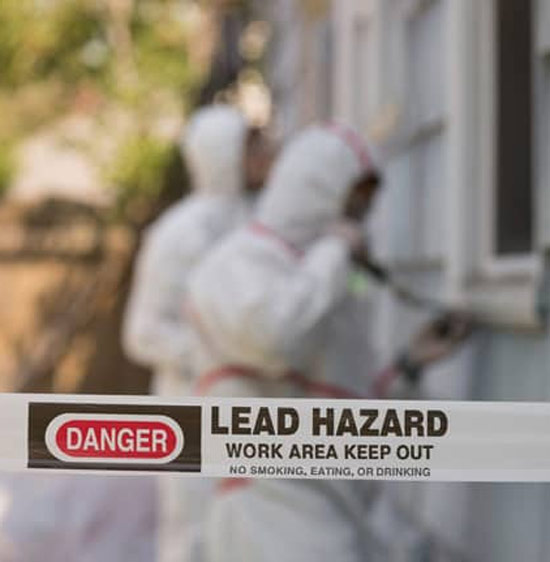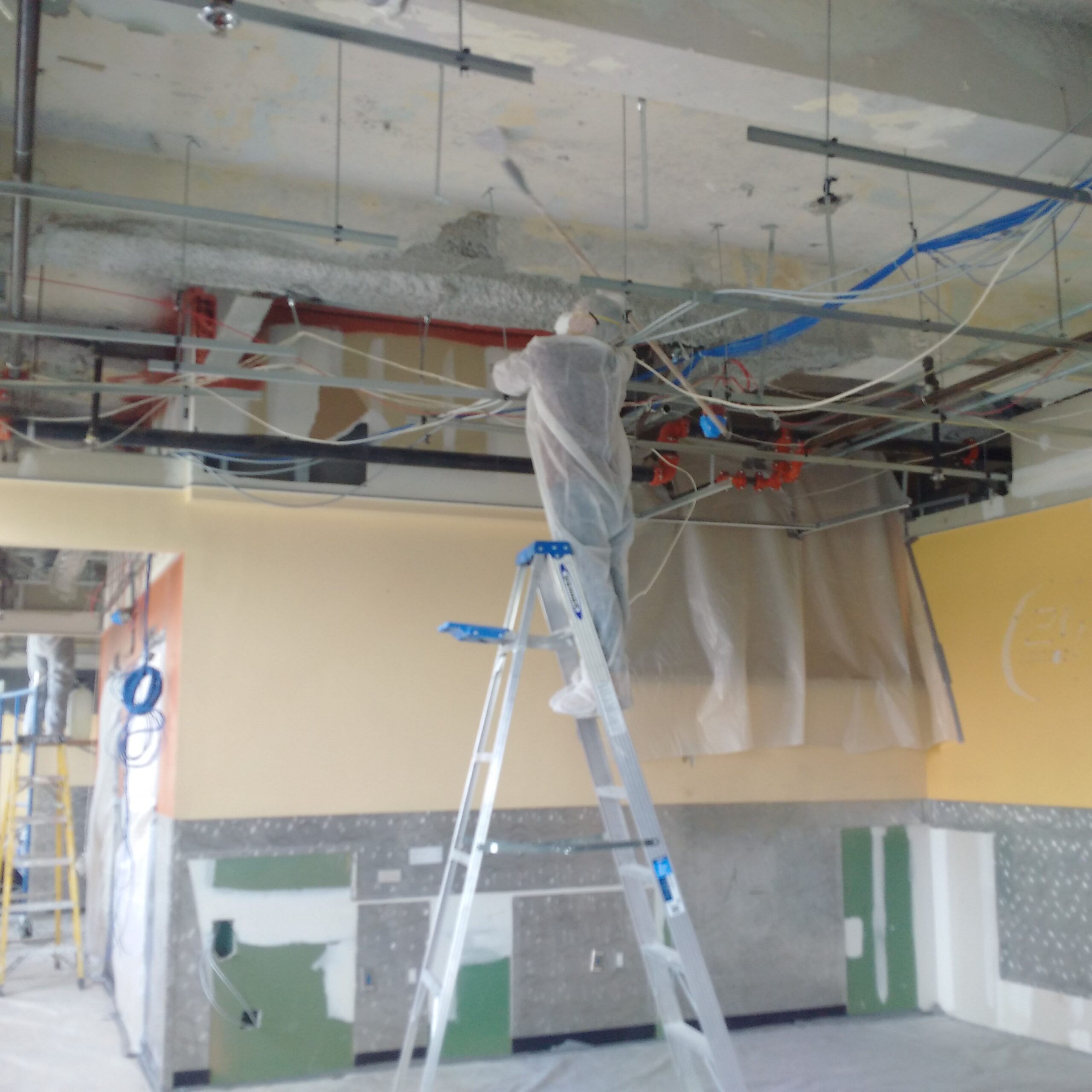Professional Lead Paint Removal Company-- Offering All NYC Boroughs
Professional Lead Paint Removal Company-- Offering All NYC Boroughs
Blog Article
Comprehensive Guide on Effective Lead Infraction Elimination Strategies
In the world of environmental safety and security, attending to lead violations requires a precise and structured technique. This extensive overview begins by highlighting the critical preliminary steps of recognizing lead risks via sophisticated analysis and testing approaches. The guide specifies on the significance of sticking to strict safety and security protocols throughout the removal procedure, consisting of the use of correct PPE and isolating impacted locations.
Determining Lead Threats
Determining lead threats is a crucial very first step in alleviating the threats linked with lead direct exposure. Lead, a toxic metal, can be present in various environmental mediums, including paint, soil, water, and dust.
The initial phase in identifying lead risks includes comprehending typical lead sources within the developed atmosphere. Structures built before 1978 are particularly susceptible due to the prevalent use of lead-based paint throughout that duration. In addition, dirt contamination can happen from degrading outside paint, industrial emissions, or historical usage of leaded fuel.
An additional considerable source is lead piping and plumbing components, which can seep introduce drinking water. Consumer goods such as playthings, porcelains, and imported products may additionally have dangerous lead levels. Notably, occupational settings and leisure activities including lead can track contaminants right into homes.
Analysis and Testing
When resolving lead dangers, effective evaluation and screening are critical. First assessment normally involves an aesthetic examination to determine possible lead resources, such as deteriorating paint or infected dirt.

Dust wipe tasting is an additional crucial method, specifically in residential settings. By gathering samples from floorings, windowsills, and various other surface areas, this method offers understandings right into possible direct exposure risks. Additionally, soil testing around structure boundaries is crucial to spot lead contamination that might position dangers, specifically to youngsters.
Safe Removal Procedures
Upon completing comprehensive assessment and testing, implementing secure removal treatments is the following important stage in dealing with lead risks. This process ensures that lead-contaminated products are successfully and safely eliminated, minimizing danger to both workers and this article residents. The very first step includes isolating the damaged location utilizing plastic sheeting and correct securing techniques to prevent the spread of lead dirt.
Employees should don ideal personal protective tools (PPE), including respirators, gloves, and non reusable coveralls, to reduce exposure. Using specialized tools and damp techniques, such as wet fining sand or using HEPA-filtered vacuum cleaners, minimizes the dispersion of lead fragments. It is vital to avoid completely dry sanding or unpleasant blasting, as these approaches can produce harmful lead dirt.
Waste disposal is an additional important part; all polluted products should be firmly nabbed and classified according to EPA and regional laws. Furthermore, thorough cleaning of the workspace with HEPA vacuum cleaners and damp wiping makes sure the removal of residual lead fragments.
Post-Removal Verification

Verification of effective lead elimination, called post-removal verification, is important to make sure the safety and habitability of the remediated location. This procedure entails a series of careful analyses and tests developed to find any residual lead bits that might posture health risks. The preliminary step commonly includes a visual evaluation to examine the conclusion and top quality of the removal job. This inspection guarantees that all recognized resources of lead have actually been attended to which no noticeable indicators of contamination continue to be.
Following the aesthetic examination, ecological tasting is carried out. This includes gathering dust, dirt, and occasionally water examples from the remediated location. Certified labs evaluate these samples to gauge lead degrees, ensuring they fall listed below the safety and security thresholds established by regulatory bodies such as the Environmental Defense Firm (EPA)
Furthermore, air high quality testing might be done to discover airborne lead fragments, particularly in situations where extensive lead-based paint elimination or restoration has occurred. The outcomes of these tests provide measurable data validating that the lead levels are within permissible restrictions.
Eventually, post-removal verification acts as an essential checkpoint, verifying the effectiveness of the lead reduction efforts and safeguarding the wellness of residents and visitors.
Safety Nets and Upkeep

A vital precautionary action includes the usage of lead-safe certified service providers for any restoration, repair, or paint tasks. These professionals are educated in practices that reduce lead dirt and debris. In addition, keeping coloured surface areas to stay clear of damaging or peeling is important, as wearing away paint can release lead fragments right into the setting.
Educational campaigns targeting home proprietors and occupants concerning the risks of lead and the importance of reporting any prospective threats can further enhance precautionary initiatives. Regular cleansing using HEPA vacuums and wet mopping methods can dramatically reduce lead dust accumulation.
Conclusion
In summary, reliable lead infraction removal demands try this out a precise approach including comprehensive analysis, exact testing, and rigid removal treatments. Ongoing assessments and maintenance are necessary to reduce future lead threats, thus guarding public health and wellness and making certain sustained conformity with regulatory demands.
Report this page